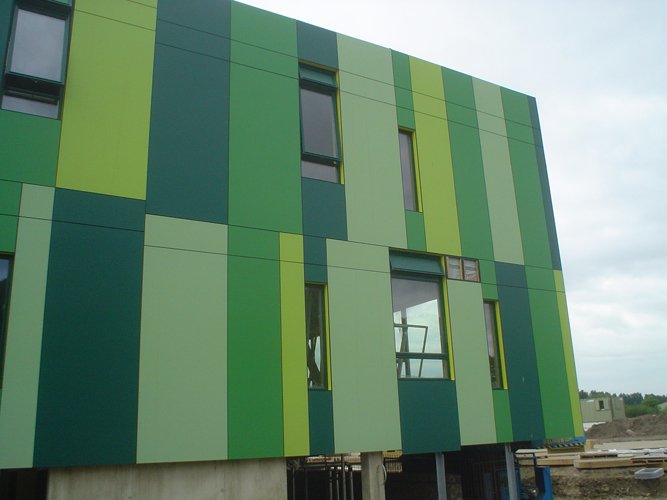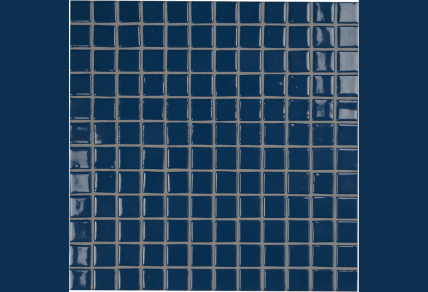In the realm of modern architecture, the exterior appearance of buildings holds immense significance. Tower blocks, in particular, stand as iconic structures in urban landscapes, commanding attention and admiration. However, beyond their visual allure, the functionality and safety of these towering edifices are paramount. This is where GRP (Glass Reinforced Plastic) building cladding emerges as a game-changer, offering a blend of durability, aesthetic appeal, and practicality.
Understanding GRP Panels for Buildings
GRP panels, also known as fiberglass reinforced panels, are composed of a polymer matrix reinforced with glass fibers. This composite material possesses remarkable strength-to-weight ratio, making it ideal for various construction applications. In the realm of building cladding, GRP panels offer versatility and performance that surpass traditional materials.
Advantages of Using GRP Panels for Buildings
The utilization of GRP panels for building cladding brings forth a plethora of benefits. Firstly, GRP panels are highly durable, capable of withstanding harsh weather conditions, UV exposure, and corrosive elements. Unlike metal cladding, GRP panels are non-corrosive, ensuring longevity without compromising structural integrity.
Moreover, GRP panels offer inherent flexibility in design and customization. Architects and designers have the freedom to explore diverse aesthetic options, ranging from sleek modern finishes to intricate patterns and textures. This versatility enables seamless integration of GRP cladding into diverse architectural styles, enhancing the visual appeal of tower blocks.
Benefits of GRP Building Cladding
Durability and Longevity
GRP building cladding is renowned for its exceptional durability. Unlike traditional materials such as steel or aluminum, GRP panels do not rust or corrode, ensuring longevity and minimal maintenance requirements. This durability translates into long-term cost savings and peace of mind for building owners and residents alike.
Weather Resistance
Tower blocks are subjected to a wide range of weather conditions, from scorching heat to freezing temperatures and heavy rainfall. GRP cladding offers superior weather resistance, providing an effective barrier against moisture ingress, thermal expansion, and UV degradation. This weatherproof characteristic ensures the structural integrity of the building envelope, safeguarding occupants and assets within.
Ease of Maintenance
In addition to its durability, GRP cladding requires minimal maintenance compared to traditional materials. Routine cleaning with mild detergent and water is usually sufficient to preserve the appearance of GRP panels. Unlike painted surfaces, GRP cladding does not require periodic repainting, saving time and resources over the lifespan of the building.
Applications of GRP Cladding in Tower Blocks
Exterior Cladding
The exterior facade of tower blocks serves as the first impression for visitors and residents. GRP cladding offers a seamless solution for enhancing the aesthetics and functionality of building exteriors. Whether it’s a sleek, contemporary design or a heritage-inspired facade, GRP panels can be tailored to meet the specific requirements of each project.
Interior Cladding
In addition to exterior applications, GRP cladding finds extensive use in interior spaces of tower blocks. From elevator lobbies to communal areas and corridors, GRP panels add a touch of elegance and sophistication to the interior environment. Moreover, GRP cladding contributes to acoustic insulation and fire resistance, enhancing occupant comfort and safety.
Fire Safety Considerations
Fire safety is a critical aspect of building design, especially in high-rise structures like tower blocks. GRP cladding offers inherent fire-resistant properties, mitigating the spread of flames and smoke in the event of a fire. Additionally, GRP panels can be manufactured with fire-retardant additives to further enhance their fire performance, ensuring compliance with stringent building codes and regulations.
Design and Aesthetic Considerations
GRP cladding offers unparalleled design flexibility, allowing architects and designers to unleash their creativity. Whether it’s a bold color scheme, dynamic textures, or innovative patterns, GRP panels can be customized to achieve the desired aesthetic vision. Furthermore, the lightweight nature of GRP panels enables hassle-free installation and reduces structural load on the building.
Installation Process of GRP Cladding
The installation of GRP cladding follows a systematic process to ensure optimal performance and durability. Prior to installation, thorough site preparation is conducted to assess substrate conditions and plan the layout of GRP panels. The installation process involves precise measurements, cutting, and fitting of panels, followed by secure anchoring to the building structure.
Safety measures, such as fall protection systems and personal protective equipment, are implemented to ensure the well-being of installation crews. Additionally, quality assurance checks are conducted at each stage of the installation process to maintain high standards of workmanship and compliance with industry regulations.
Cost Considerations
While the initial cost of GRP cladding may be higher than traditional materials, the long-term benefits far outweigh the investment. GRP panels offer significant savings in maintenance and lifecycle costs, thanks to their durability and low maintenance requirements. Moreover, the aesthetic versatility of GRP cladding adds value to the property, enhancing its market appeal and resale value.
Comparative Analysis: GRP vs. Other Cladding Materials
Comparison with Traditional Materials
When compared to traditional cladding materials such as steel and aluminum, GRP offers distinct advantages in terms of durability, design flexibility, and cost-effectiveness. Unlike metal cladding, GRP panels do not corrode or rust, making them ideal for coastal or humid environments. Additionally, GRP panels can be molded into complex shapes and patterns, allowing for greater architectural creativity.
Environmental Impact
GRP cladding is recognized for its sustainability credentials, as it is manufactured using recyclable materials and consumes less energy during production. Unlike PVC or vinyl cladding, GRP panels do not release harmful chemicals or toxins into the environment, contributing to a healthier indoor environment for building occupants.
Case Studies: Successful Implementation of GRP Cladding
Examples of Tower Blocks with GRP Cladding
Several iconic tower blocks around the world have benefited from the installation of GRP cladding. From residential skyscrapers to commercial high-rises, GRP panels have proven their worth in enhancing both form and function. Case studies showcase the successful integration of GRP cladding into diverse architectural contexts, highlighting the positive impact on aesthetics, performance, and occupant satisfaction.
Challenges and Limitations
Despite its many advantages, GRP cladding is not without its challenges. One of the primary concerns is the potential for installation errors, which can compromise the performance and longevity of the cladding system. Additionally, maintaining the pristine appearance of GRP panels may require periodic cleaning and upkeep, especially in urban environments prone to pollution and graffiti.
Future Trends in GRP Building Cladding
The future of grp building cladding looks promising, with ongoing advancements in material science and manufacturing technology. Innovations such as self-cleaning coatings, integrated solar panels, and smart facades are poised to revolutionize the way we approach building envelope design. Moreover, sustainability initiatives are driving the development of eco-friendly GRP materials that minimize environmental impact without sacrificing performance.
Regulatory Compliance and Standards
Ensuring compliance with building codes and standards is paramount when specifying GRP cladding for tower blocks. Building regulations dictate requirements related to fire safety, structural integrity, and environmental sustainability. By adhering to these standards, architects and developers can ensure the safety, durability, and legality of GRP cladding installations.
Safety and Security Measures
In addition to regulatory compliance, it is essential to consider safety and security measures when designing and installing GRP cladding. Fire safety standards, such as fire resistance ratings and smoke spread limitations, must be met to protect building occupants in the event of a fire. Moreover, measures to deter vandalism and graffiti, such as anti-graffiti coatings and surveillance cameras, contribute to the long-term integrity and appearance of GRP cladding.
Maintenance Tips for GRP Cladding
To prolong the lifespan and appearance of GRP cladding, regular maintenance is essential. Cleaning procedures should be performed using mild detergent and water to remove dirt, grime, and pollutants. Periodic inspections are recommended to identify any signs of damage or deterioration, such as cracks, delamination, or discoloration. Prompt repairs and maintenance activities help preserve the performance and aesthetics of GRP cladding, ensuring its continued value and functionality.
Conclusion
In conclusion, GRP building cladding offers a compelling solution for enhancing the durability, aesthetics, and performance of tower blocks. From its superior weather resistance to its limitless design possibilities, GRP cladding delivers unmatched value to building owners, architects, and residents alike. By embracing GRP technology, tower blocks can achieve a harmonious balance of form and function, ensuring their longevity and relevance in the urban landscape.







